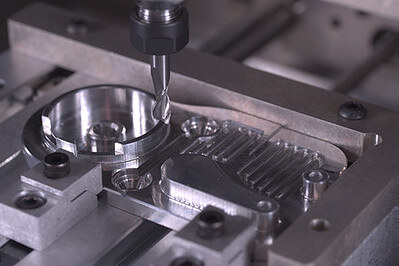5 Strategies for Overcoming Complex Machining Challenges
Share

5 easy techniques for conquering tough machining operations, Complex machining refers to the production of parts and components with intricate shapes and high tolerances, and it often requires the use of a combination of different machining techniques and tools.
These parts can pose significant challenges in terms of material properties, surface finish, and dimensional accuracy, and it is, therefore, essential to have a set of strategies in place to ensure quality and efficiency in the machining process
Here are five strategies that can help address these challenges.
1. Advanced machine tools and automation:
Modern machining centres are equipped with advanced control systems and sensors that can optimize the machining process and improve the accuracy of finished parts. Like the TBD (Tool Breakage Detector) automatically stops and it detects a broken tool and this can work hand in hand especially with cobot automation, material handling systems to avoid scraps.

2. Specialized cutting tools and work holding devices
Complex machining often requires the use of specialized tools, such as custom end mills with high helix angles or tools with variable geometry.
These tools are designed to produce precise and efficient cuts and chip evacuation. They can help improve the surface finish and dimensional accuracy of the finished parts. Workholding devices, such as fixtures or vises, can also play a crucial role in complex machining by providing stable and secure support for the workpiece during the machining process.

3. Material properties
Different materials have different machining characteristics, and understanding these properties can help inform the choice of tools and machining strategies. For example, harder materials may require the use of tools with a higher level of wear resistance, while softer materials may be more susceptible to tool deflection or chatter.

4. CAD and CAM Software
These tools allow for the creation of detailed 3D models of the parts and the machining process and can help optimize the machining strategy and reduce the risk of errors. CAM software can also generate tool paths for the machining process, which can be used to control the machine tools and ensure that the finished parts meet the desired tolerances.

5. Quality control.
To ensure that the finished parts meet the required specifications, it is important to have robust quality control processes in place. This may involve the use of inspection tools and techniques, such as coordinate measuring machines (CMMs) or laser scanning, to measure the dimensions and surface finish of the parts. It may also involve the use of statistical process control (SPC) techniques to monitor the machining process and identify any potential issues before they become problems.

In summary, complex machining presents significant challenges that require the use of advanced machine tools and automation and specialized cutting tools by implementing these strategies, manufacturers can ensure that they produce high-quality parts with precise tolerances and excellent surface finishes.
You may also like

Optimizing CAD Designs for CNC Machining: Save Time and Money
Computer-aided design (CAD) plays a critical role in the manufacturing industry, and CNC machining is one of the most popular manufacturing processes that relies on CAD.

Ensuring Safety in the Fast-Paced World of Precision CNC Machining
CNC-machining is a process that involves technology to fabricate precise parts and components from various materials, such as Aluminum, Metals and Plastics. It is a highly

5 Tips for Optimizing CNC Efficiency with G-Code
G-code, which stands for “geometric code,” is the programming language used by CNC machines. It uses to generate instructions for CNC machines to utilize when making
physical parts.


